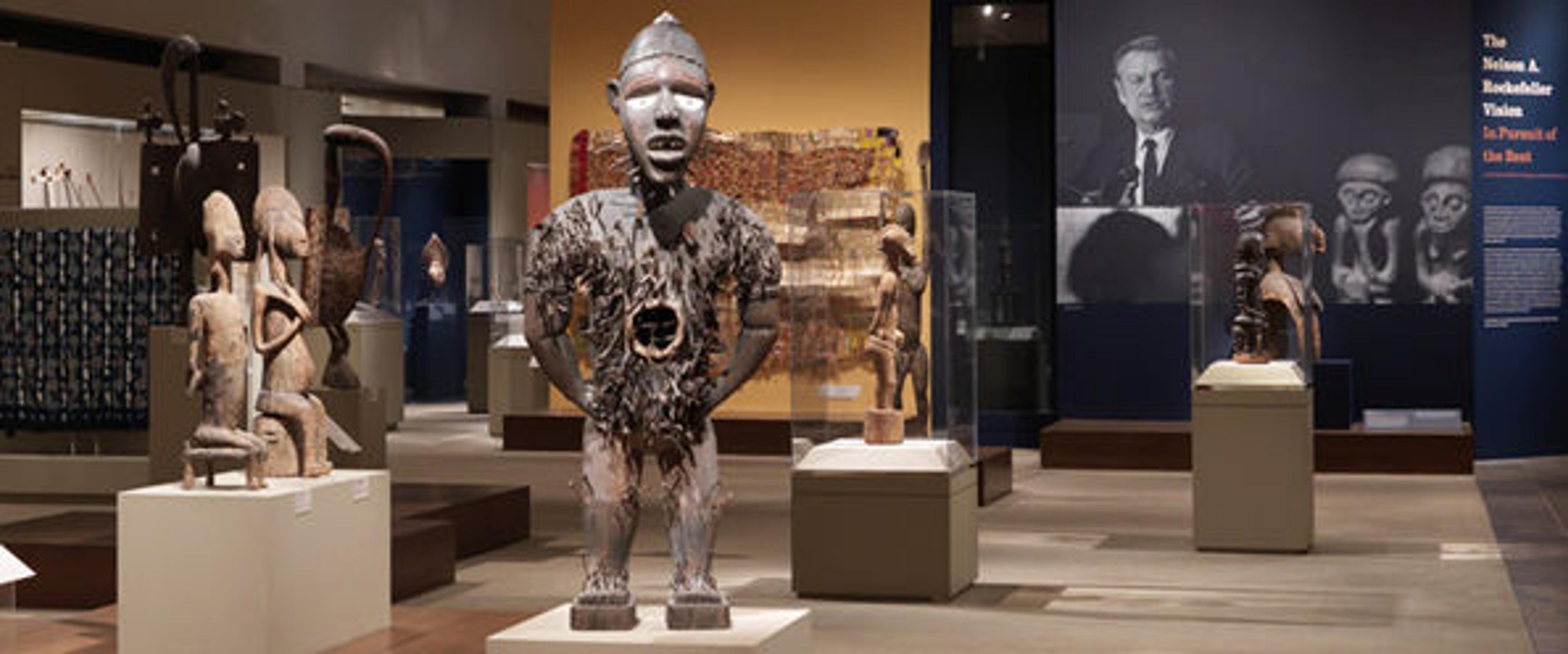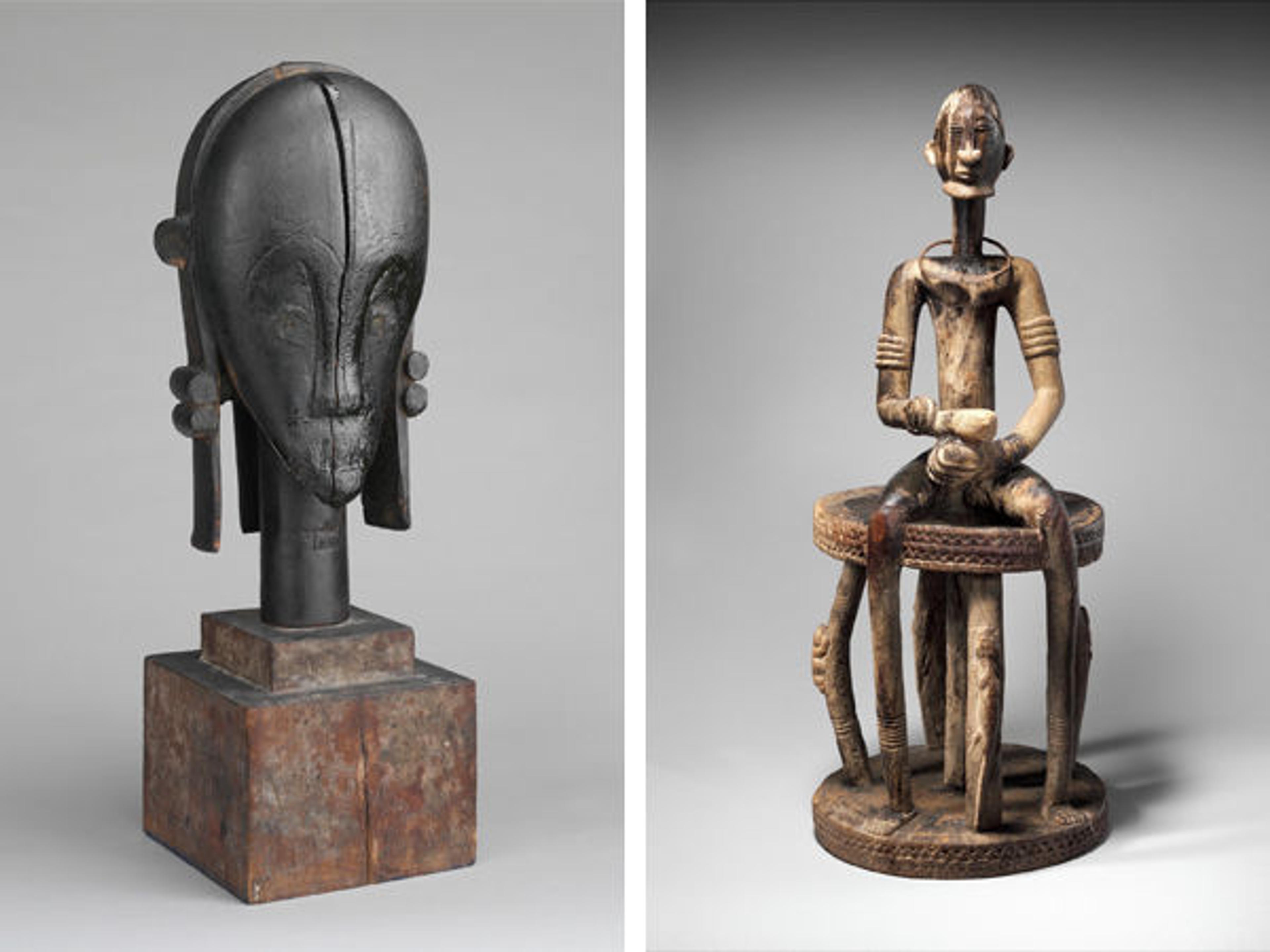
«Brought to you by the Spectrum group, which encourages post-college audiences to experience the Met in new and unexpected ways, this post is the third installment of our "Spectrum Spotlight" series, which introduces some of the staff members who make the Museum such a special place.»
Yaëlle Biro, PhD—assistant curator for the Arts of Africa in the Met's Department of the Arts of Africa, Oceania, and the Americas—recently spoke with us about the special exhibition The Nelson A. Rockefeller Vision: In Pursuit of the Best in the Arts of Africa, Oceania, and the Americas, on view through October 5.

Spectrum: One of your noted interests regards how Europe and America approached African art throughout history. How has your curatorial practice been influenced by this topic?
Yaëlle Biro: It's true that I find the history of African art's reception in the West fascinating. Until the beginning of the twentieth century, objects from Africa were mostly perceived as ethnographic objects, or curios. Both the colonial context and the interest for these works on a purely formal basis by artists and other intellectuals during the first decades of the century radically impacted the way African art has been perceived until today.
My interest in these phenomena has found expression in my curatorial practice in a very concrete way. The first exhibition I curated, 2013's African Art, New York, and the Avant-Garde, presented the way in which African works were first exhibited and collected in New York during the modernist, post–Armory Show era of the 1910s and '20s. There, I tried to be very candid about some of the misinterpretations and prejudices established and propagated at the time, even by the most fervent admirers of African art. These initial ways of looking are so firmly entrenched that it is an ongoing battle in our field. I am convinced that a better understanding of the past is key for a more self-reflective approach to the art of the African continent.
Spectrum: Tell us about the current exhibition The Nelson A. Rockefeller Vision: In Pursuit of the Best in the Arts of Africa, Oceania, and the Americas, and your role in its organization.
Yaëlle Biro: This exhibition was originally thought of as "part two" of African Art, New York, and the Avant-Garde, moving forward to the time period from the 1940s to the 1960s and shifting focus onto our own permanent collection. The definition of what constitutes an African art "canon" is at the core of both exhibitions—and, in both instances, one formed through an American prism. The history of our department is a fascinating one, intimately tied with the vision and passion of Governor Nelson A. Rockefeller, who assembled a collection of about 3,500 works from Africa, Oceania, and the Americas. He donated this collection (of what was then called "primitive art") to the Metropolitan Museum in 1969, and the donation eventually led to the inauguration, in 1982, of the Michael C. Rockefeller Wing, named in memory of his son. The Met thus became a truly global institution.
The exhibition encompasses art from three completely vast and different geographic regions, so it was the collaborative endeavor of all curators in the Department of the Arts of Africa, Oceania, and the Americas. The overall concept and themes of the exhibition's different sections were solidified in partnership with Alisa LaGamma, Ceil and Michael E. Pulitzer Curator in Charge of the Department of the Arts of Africa, Oceania, and the Americas, and we sought help from the entire curatorial team in our department at every step—Eric Kjellgren for Oceanic art, Julie Jones and Heidi King for Precolumbian, and Jennifer Larson, manager of our Visual Resource Archive—from the works' selection, to the writing of labels and the establishment of an overarching timeline. I coordinated the team's endeavor for both the exhibition and the Met Bulletin dedicated to the show, which will be published this summer.
Spectrum: Do we know what triggered Nelson Rockefeller's interest in what was known during his time as "primitive art"?
Yaëlle Biro: One of the key figures who nurtured Rockefeller's love for the arts was his mother, Abby Aldrich Rockefeller. A founder of the Museum of Modern Art, she began collecting African art in the 1920s and juxtaposed it with examples of modern art within their home. Nelson Rockefeller's extensive travels to Asia and the Pacific for his honeymoon, and later to Latin America—both for family business and as part of his involvement with the Office of Inter-American Affairs—only increased his interest in non-Western art. His first purchase was a Hawaiian wooden bowl during his honeymoon, which he kept his entire life. It is important to note that his focus was primarily aesthetic: He saw these works as great artistic achievements and wanted them to be universally recognized as such.

Left: Sculptural Element from a Reliquary Ensemble: Head (The Great Bieri), 19th–early 20th century. Gabon. Fang peoples, Betsi group. The Metropolitan Museum of Art, New York, The Michael C. Rockefeller Memorial Collection, Bequest of Nelson A. Rockefeller, 1979 (1979.206.229). Right: Figure: Seated Male on Stool, 16th–20th century. Mali. Dogon peoples. The Metropolitan Museum of Art, New York, The Michael C. Rockefeller Memorial Collection, Gift of Nelson A. Rockefeller, 1965 (1978.412.455)
Spectrum: A team of curators organized this exhibition and, likewise, a team of people collaborated to form the Rockefeller collection. What can you tell us about Rockefeller's advisors, René d'Harnoncourt and Robert Goldwater?
Yaëlle Biro: Around 1940, Rockefeller met an individual who would have an enormous impact on his collecting—René d'Harnoncourt, the first in a set of skilled advisors with whom Rockefeller surrounded himself. Quickly, with d'Harnoncourt's encouragement, Rockefeller systematized his collecting practice with the aim to place it in a museum. By 1954, the museum that became known as the Museum of Primitive Art [MPA] was chartered, and it opened its doors in a townhouse on 54th Street in the early months of 1957, with Robert Goldwater as its director. While Rockefeller and d'Harnoncourt exclusively focused on artistic greatness, Goldwater, as a trained and well-known art historian, brought a scholarly perspective to the team and an aura of international prestige.
As our team was working on this exhibition, we realized just how much we had inherited from the original structure of the MPA: When Rockefeller made his extremely generous donation to the Met in 1969, it was not only the collection that was transferred, but also the MPA's staff, library, and Rockefeller's vision of presenting the greatest achievements of artists from Africa, Oceania, and the Americas to the widest audience possible.
Spectrum: You have worked at the Met for eight years. What drew you to working here, and what is the most fulfilling part of your job?
Yaëlle Biro: Eight years already! I came to the Museum from France as a long-term graduate intern to assist Alisa LaGamma on the exhibition Eternal Ancestors: The Art of the Reliquary in Central Africa. I had just started my PhD in African art history in Paris and never thought I would still be in New York, as a curator, eight years later! This was my first experience in a museum, and I remember being impressed by the level of scholarship and dazzled by the endless diversity of the curatorial activities here.
Today, this is still what I find most exciting about what we do as curators—to some extent, in addition to taking care of and continuously researching the collection itself, we are educators, we produce new scholarship, we stay informed about the market, and are in contact with collectors, fellow curators, and academics. As a curator of African art in particular, participating in changing people's often-prejudiced perspective on the extraordinary artistic productions of this vast continent might be the most fulfilling aspect of my job. There is never a dull moment!
Spectrum: You participated to the web series Connections and 82nd & Fifth, and you tweet about your activities as a curator at the Met (@YaelleBiro). What are your thoughts on these digital means of communicating with museum audiences?
Yaëlle Biro: As somebody who had never been into social media (I still don't have a Facebook account!), I am amazed by how much fun I am having tweeting, how informative and rewarding it can be. There is definitely something to be said about this very direct way of communicating. I am trying to remain focused in my posts so that people know what to expect from me, namely the historical art of Africa. If somebody starts following me, I imagine it is due to some interest in African art, even if it is only remote. If, through my tweets, I can keep them interested in the topic, make them feel at ease in our galleries during a visit, stay connected from afar, show the diversity of Africa's creativity and the breadth of our activities related to African art, then I believe I have achieved my goal.
Related Link
The Nelson A. Rockefeller Vision: In Pursuit of the Best in the Arts of Africa, Oceania, and the Americas
Photo of Yaëlle Biro by Jackie Neale Chadwick